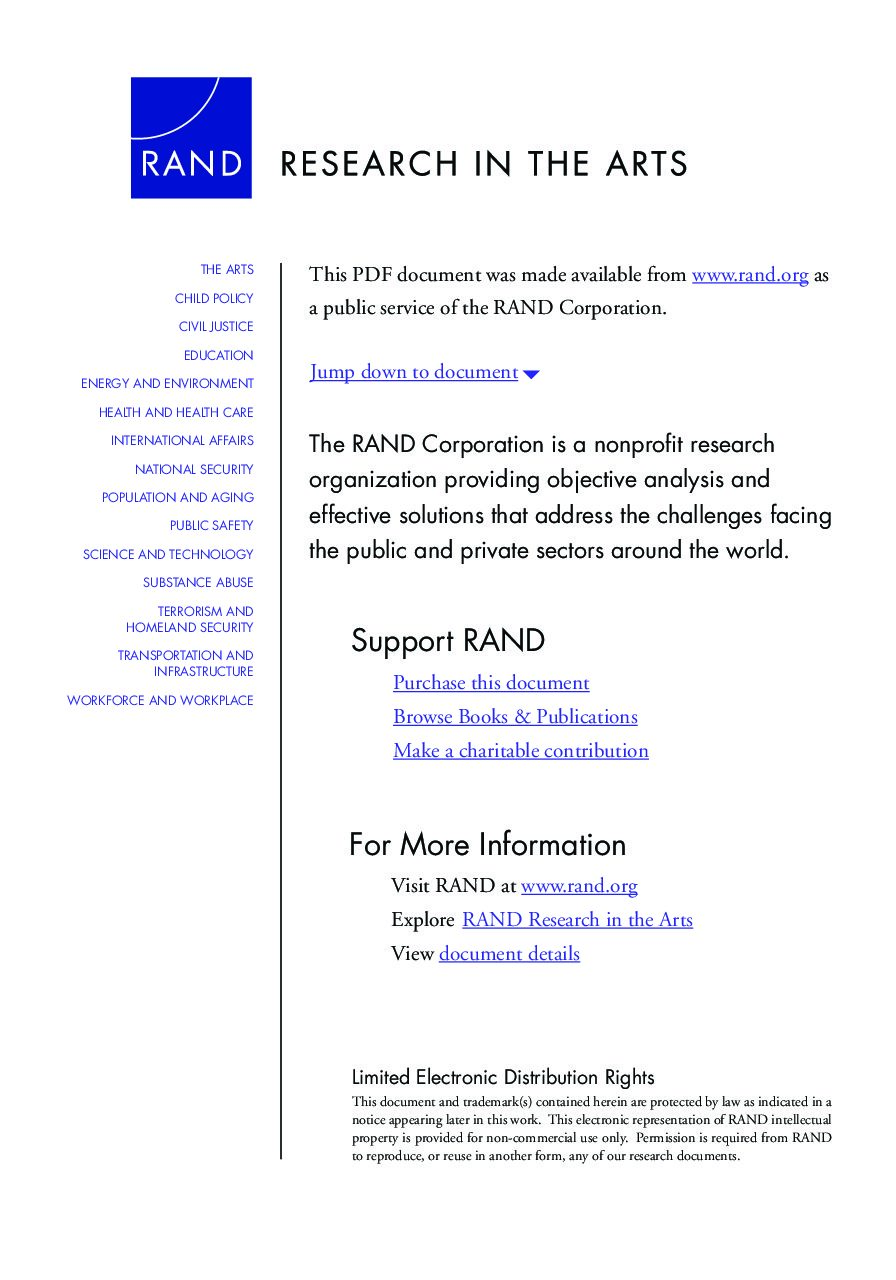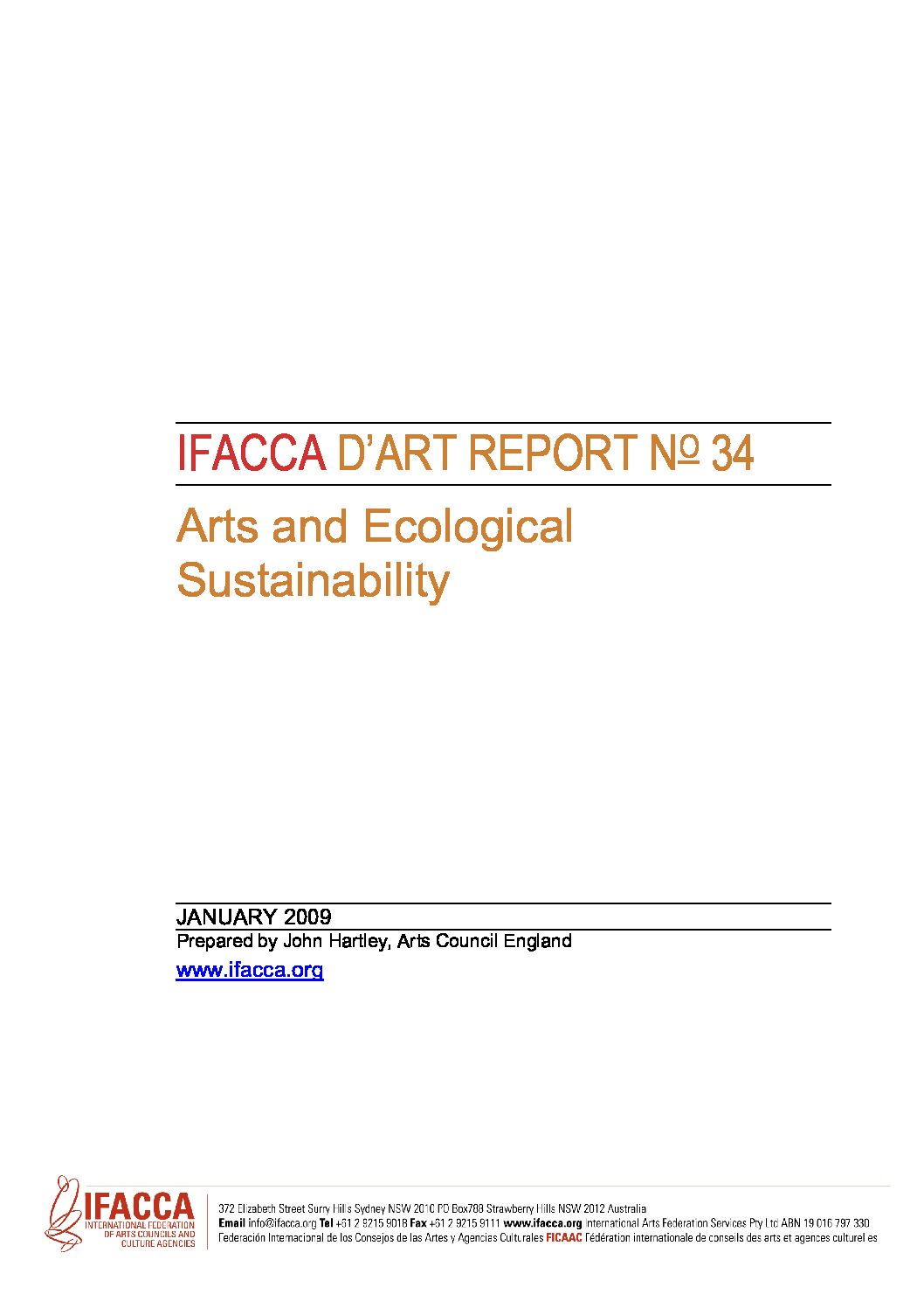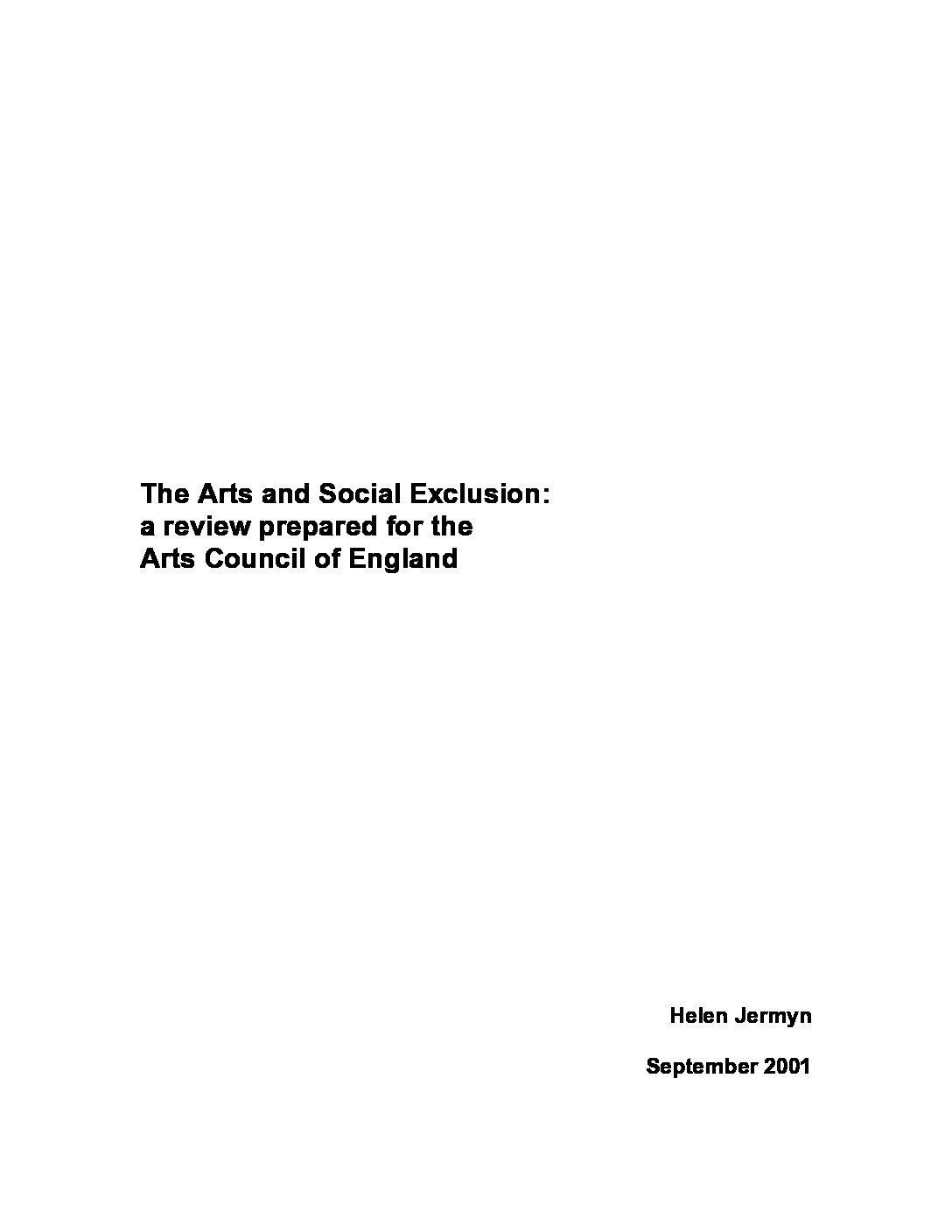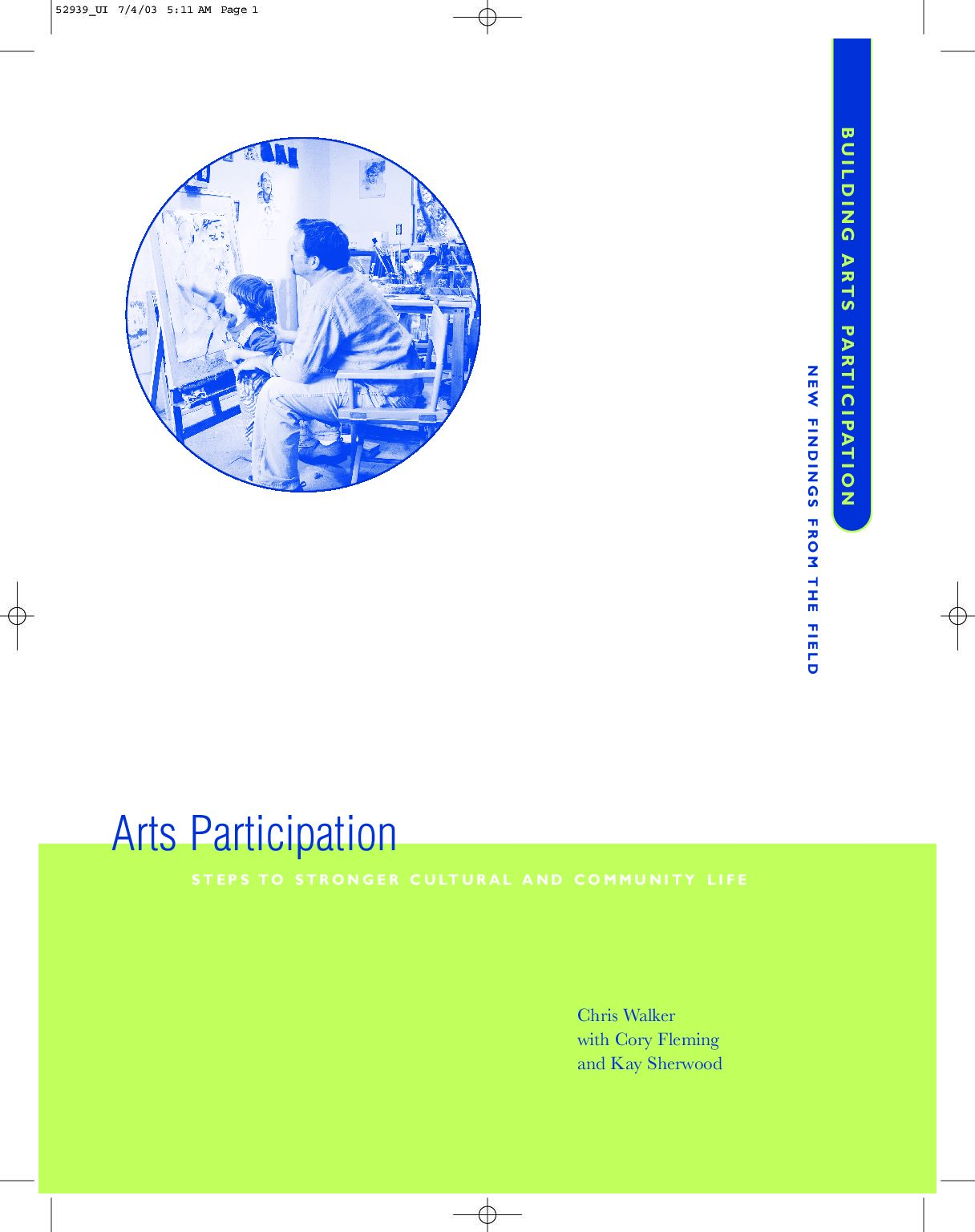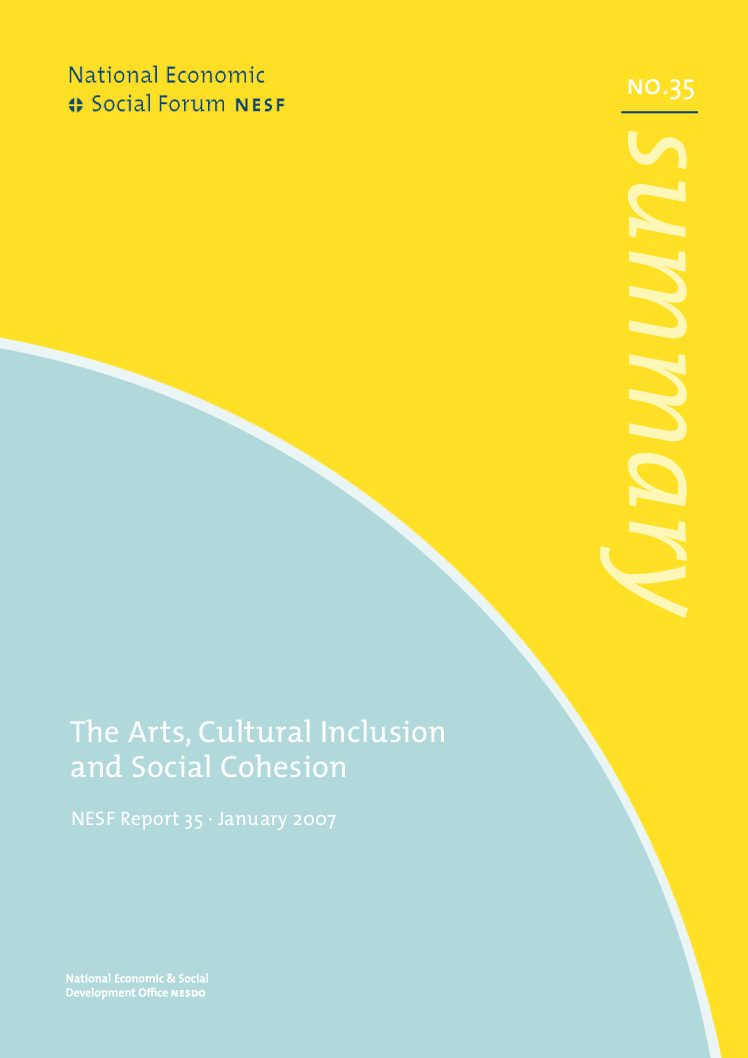-
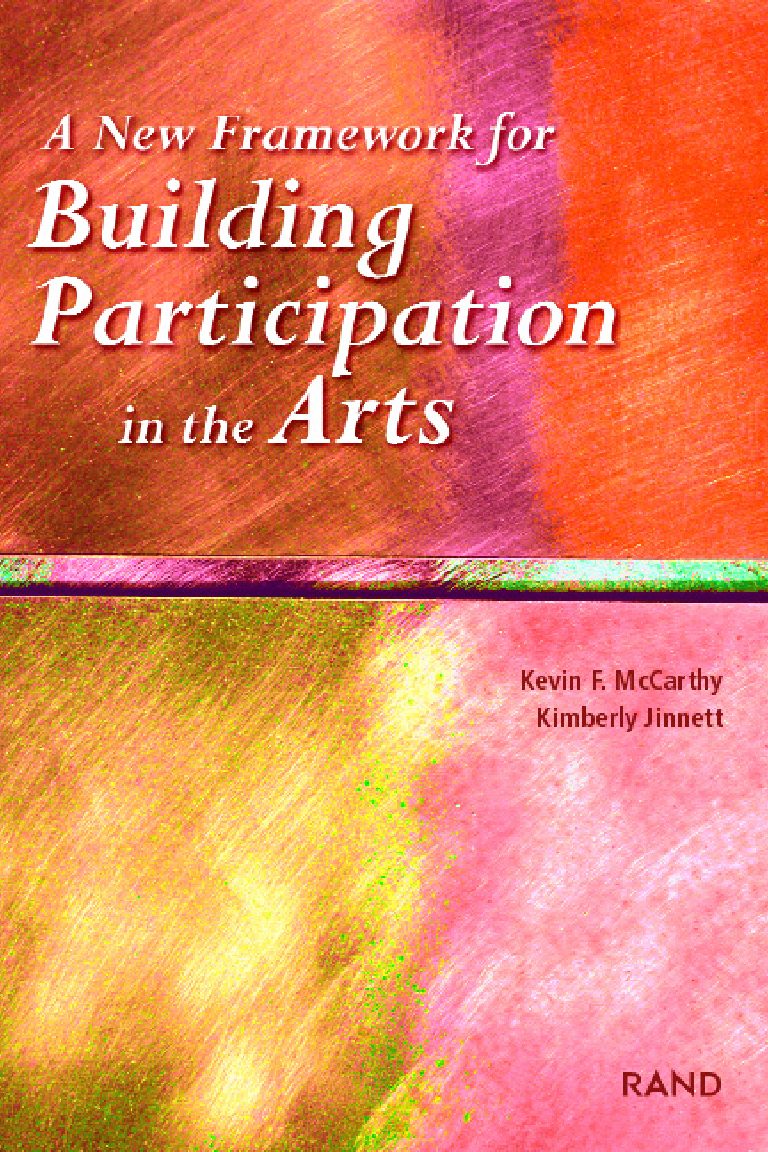
A new framework for building participation in the arts – 606KB
Arts organizations across the country are actively expanding their efforts to increase public participation in their programs. This report presents the findings of a RAND study sponsored by the Wallace-Reader’s Digest Funds that looks at the process by which individuals become involved in the arts and attempts to identify ways in which arts institutions can most effectively influence this process. The report presents a behavioural model that identifies the main factors influencing individual decisions about the arts, based on site visits to institutions that have been particularly successful in attracting participants to their programs and in-depth interviews with the directors of more than 100 institutions that have received grants from the Wallace-Reader’s Digest Funds and the Knight Foundation to encourage greater involvement in the arts.
-
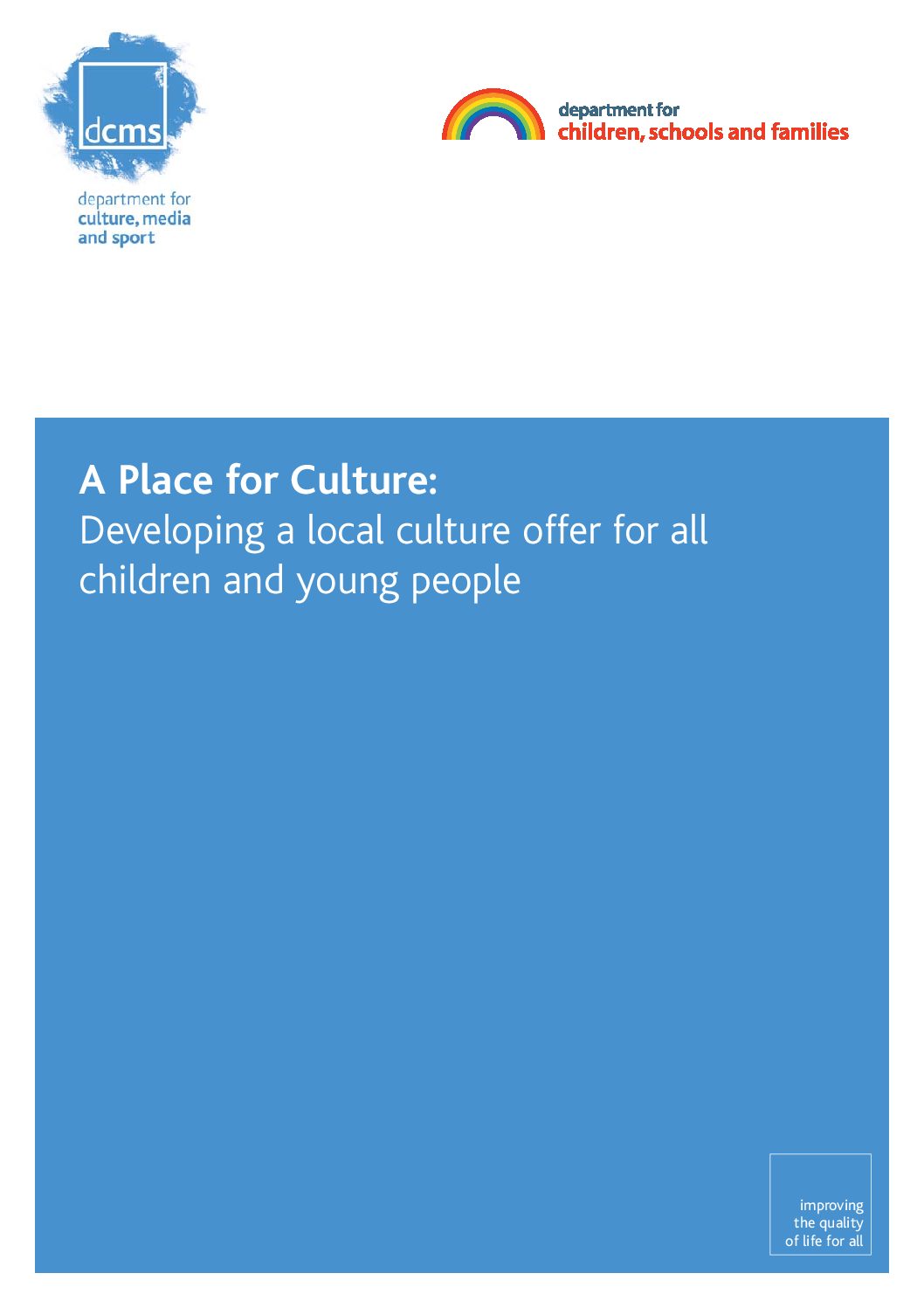
A Place for Culture: Developing a local culture offer for all children and young people – 112KB (2010)
This document sets out a vision that all children, no matter where they live or what their background, should have the opportunity to enjoy high-quality cultural experiences in and out of school.
-
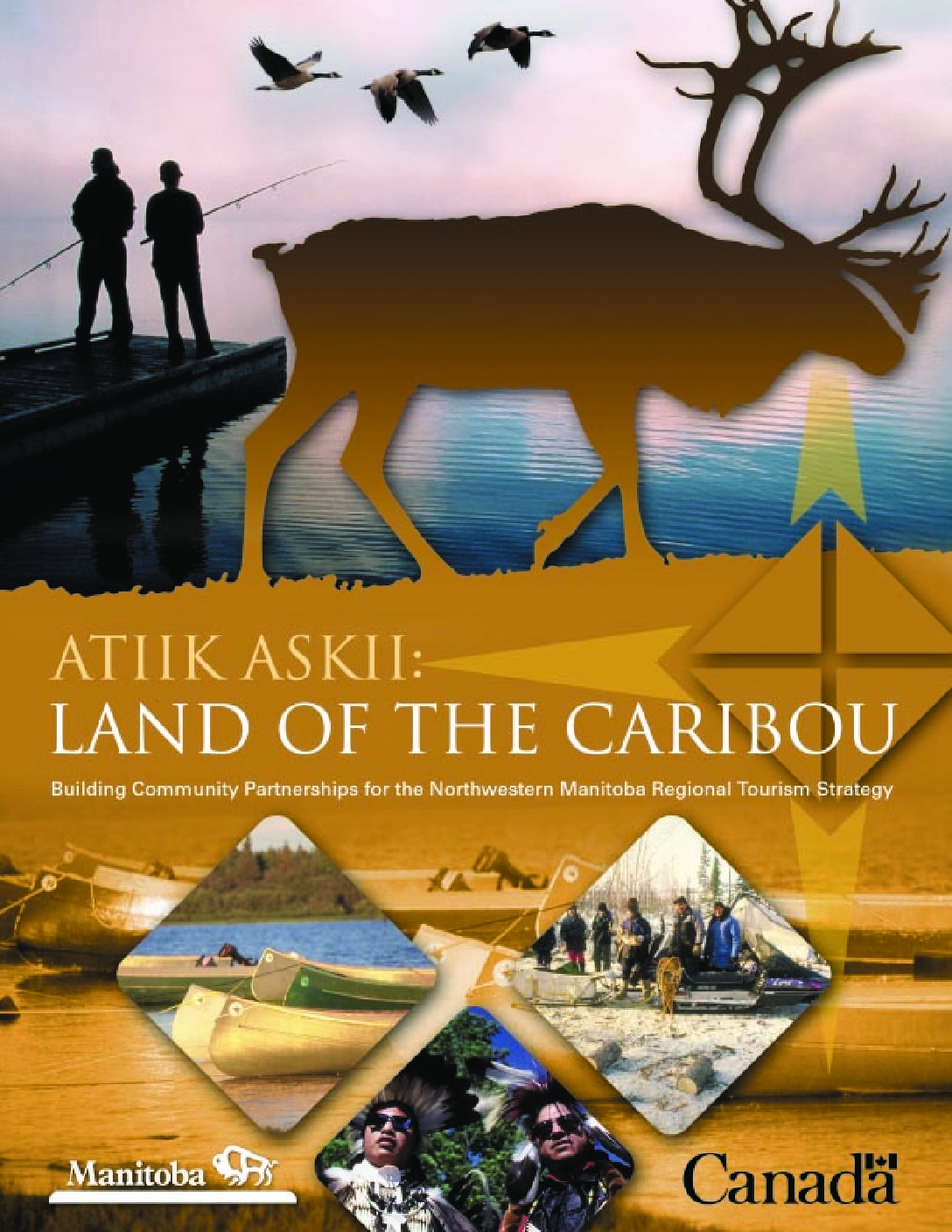
Aboriginal Tourism in Canada – Atiik Aski: Land of the Caribou – 1273KB
A guide to developing community-based and Aboriginal tourism. The guide identifies and describes eight best practices derived from a community tourism development strategic planning process carried out over two years by 13 communities in northwestern Manitoba and eastern Saskatchewan.
This case study of the Northwest Manitoba Regional Tourism Strategy, Atiik Askii: Land of the Caribou, identifies and describes eight best practices derived from a community tourism development strategic planning process carried out over two years by 13 communities — 12 located in northwestern Manitoba and one in eastern Saskatchewan. Community and economic development practitioners attempting community tourism development may find that considering and/or adopting these practices in their planning processes can help stakeholders ensure and enrich a successful outcome. The study is based on field interviews with those key participants in the strategic planning process.
-
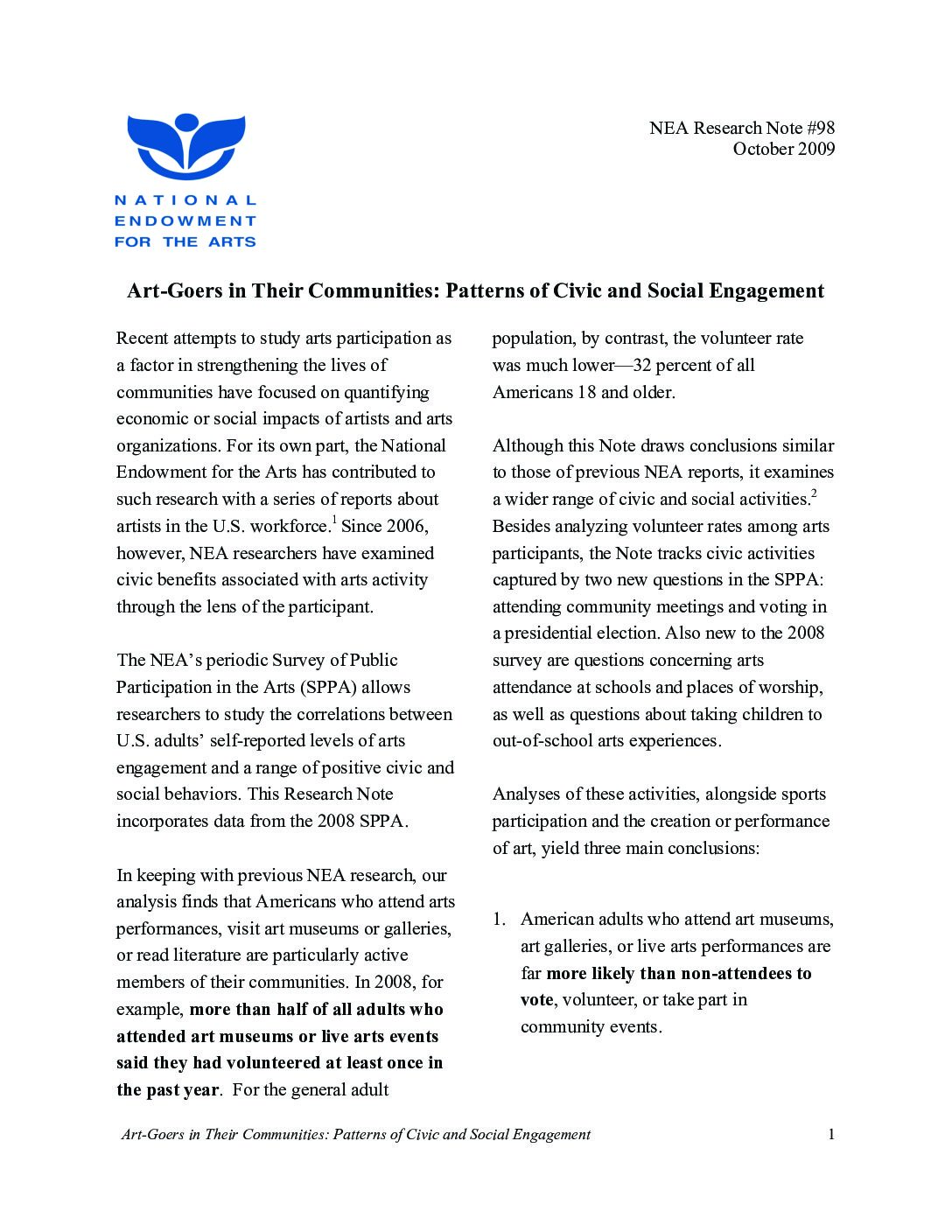
Art-Goers in Their Communities: Patterns of Civic and Social Engagement – 277KB (2009)
Recent attempts to study arts participation as a factor in strengthening the lives of communities have focused on quantifying economic or social impacts of artists and arts organizations. For its own part, the National Endowment for the Arts has contributed to such research with a series of reports about artists in the U.S. workforce.1 Since 2006, however, NEA researchers have examined civic benefits associated with arts activity through the lens of the participant.
-

Artist centers: evolution and impact on careers, neighborhoods and economies – 9399KB (2006)
Over the past generation, a unique form of dedicated space for artists has emerged in the United States. Minnesota serves as a laboratory in this study to explore the impact of artists’ centres on artists and on regions and neighbourhoods. The state and its major metro area—the Twin Cities of Minneapolis–St. Paul—host high concentrations of artists, with their ranks growing relatively rapidly over two decades. In tandem with other elements in the region, the extraordinary density and quality of artists’ centres contribute to the state’s artistic reputation.
-
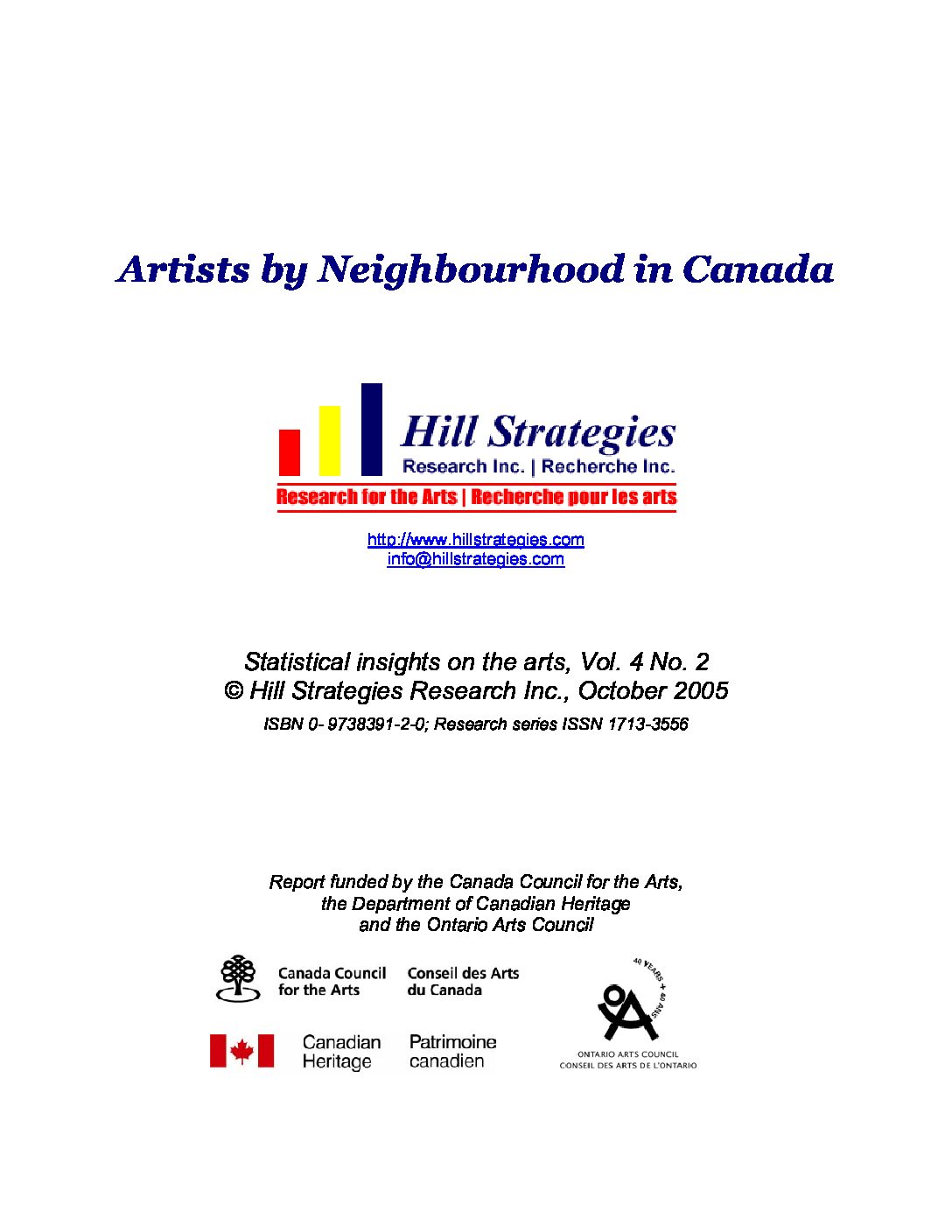
Artists by Neighbourhood in Canada – 1199KB (2005)
This report provides an analysis of artists residing in various postal regions – “neighbourhoods” – across Canada. The study is based on a custom data request from Statistics Canada’s 2001 census, conceived of and commissioned by Hill Strategies Research.
-
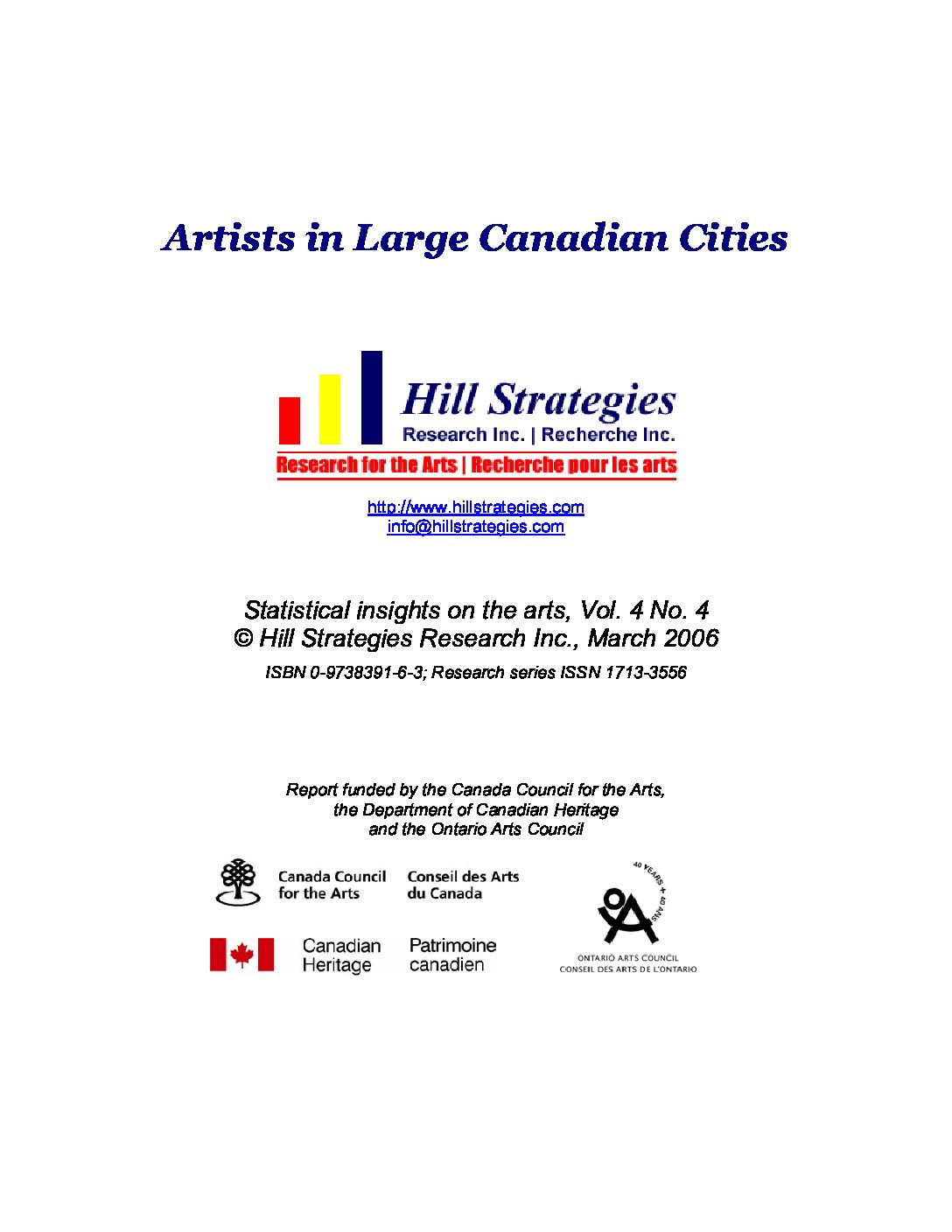
Artists in Large Canadian Cities – 1735KB (2006)
This report provides an analysis of artists residing in 92 large municipalities across Canada. “Large municipalities” are defined as those cities with at least 50,000 residents in 2001.
-
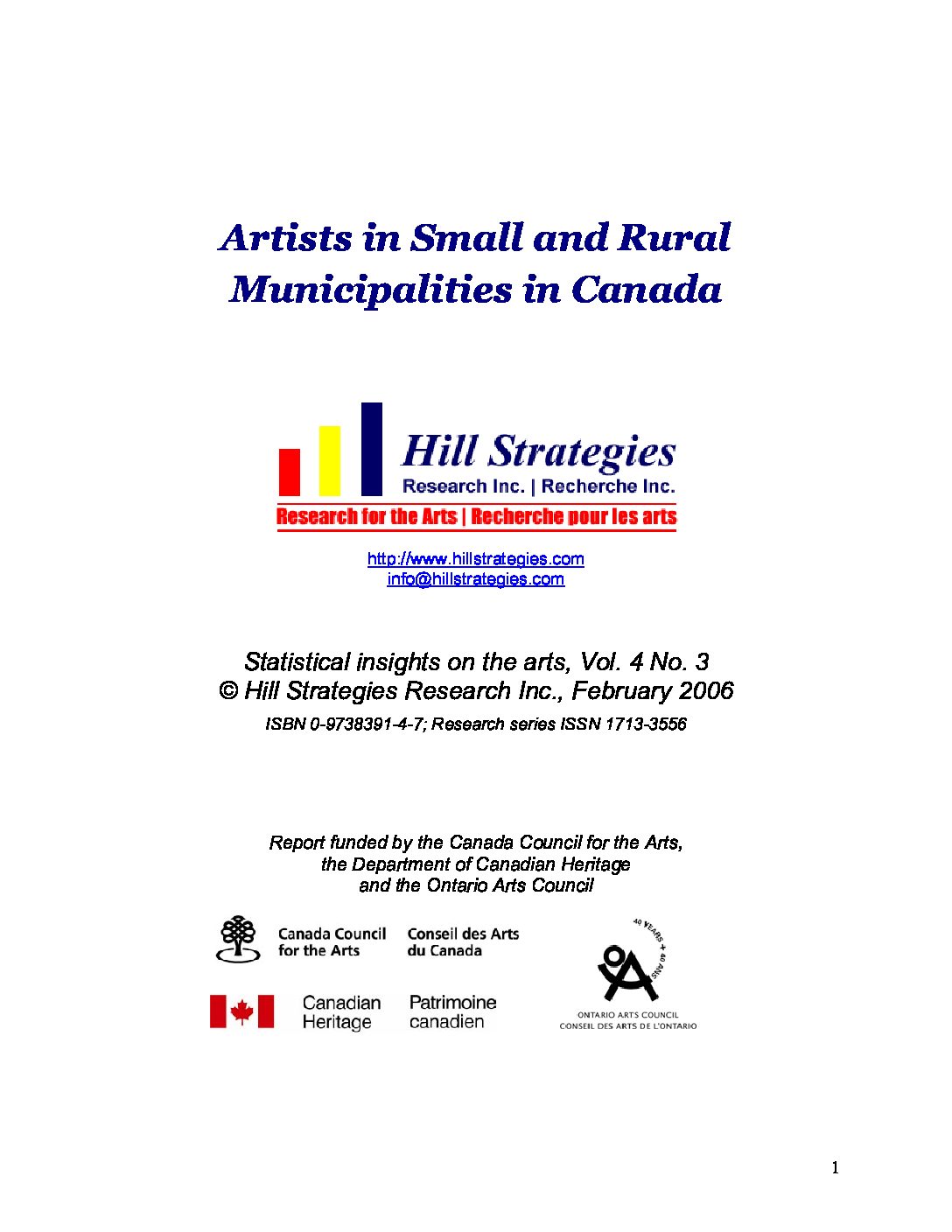
Artists in Small and Rural Municipalities in Canada – 1529KB (2006)
This report finds significant concentrations of artists in small and rural municipalities across Canada. The study is based on a custom data request from Statistics Canada’s 2001 census, conceived of and commissioned by Hill Strategies Research.
-
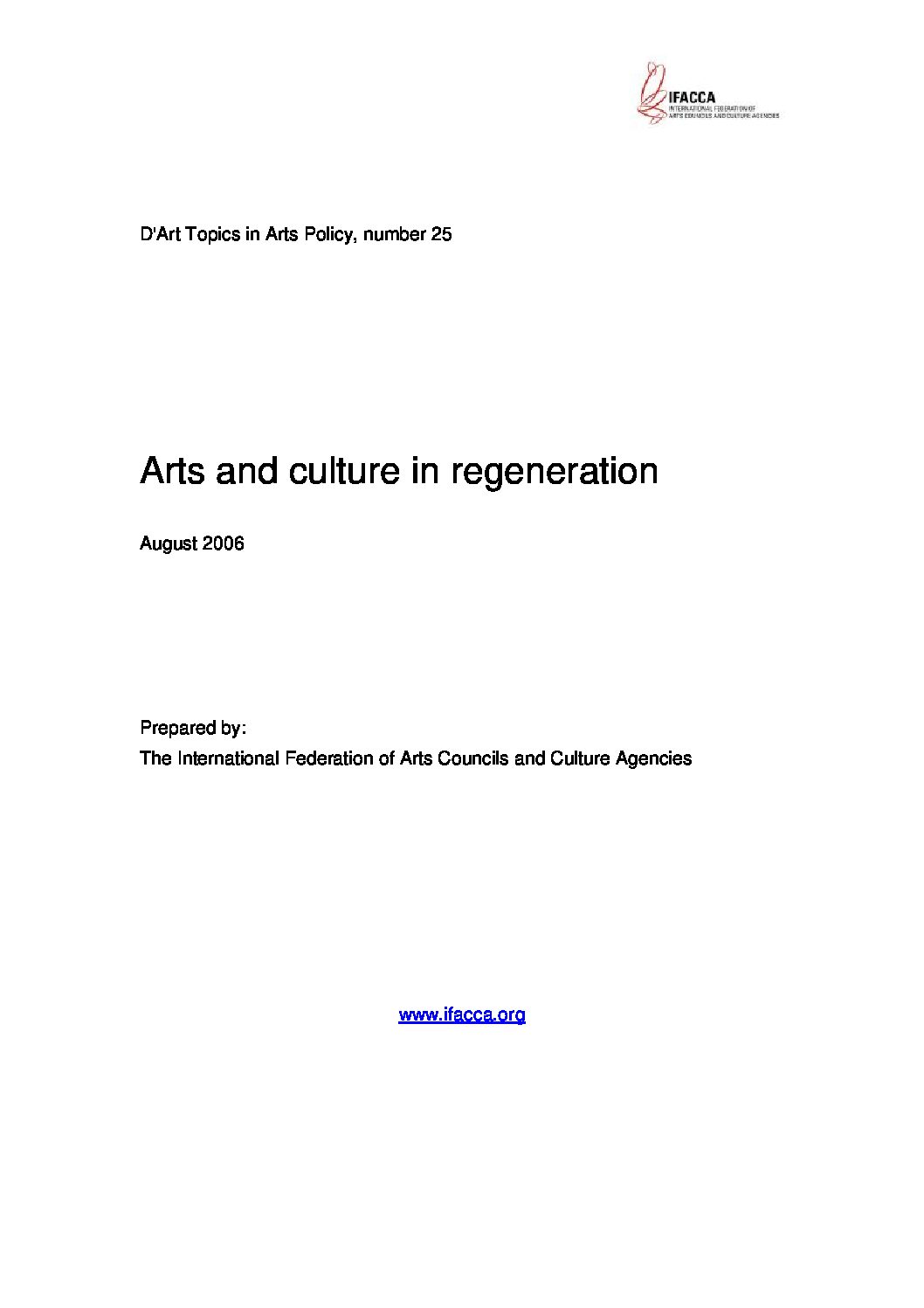
Arts and culture in regeneration – 237KB (2006)
A review of international literature related to arts and culture in regeneration, presented at the World Summit on Arts asnd Culture held in NewcatleGateshead, England, in June 2006.
-
Arts and Culture in the Metropolis Strategies for Sustainability – 148KB (2007)
After three and a half decades of unprecedented growth, the nonprofit arts face an environment that threatens to stunt that growth and raises the prospect of future consolidation. This situation poses severe challenges to the sustainability of local arts sectors. … This study has three goals: (1) to identify the sources and characteristics of this new environment, (2) to describe the ways local arts communities are responding to new challenges, and (3) to analyze Philadelphia’s arts sector and recommend potential solutions to its sustainability problems.
-
Arts and Ecological Sustainability Report – 217KB (2009)
This report provides examples of good practice in supporting artists or arts organisations with creative and practical responses to ecological concerns. The research was undertaken in collaboration with Arts Council England, which was looking to identify potential partners with whom to develop its own work in this area. This report contains a commentary and analysis of the responses to the D’art query from IFACCA’s network written by ACE’s John Hartley, and includes background and context, a full digest of responses, and links to information resources.
-
Arts and Social Exclusion – 539KB
A literature review commissioned by the Arts Council of England to support its two-year social inclusion research programme. The review explores the concept of social exclusion, and evidence of the impact of the arts in contributing to addressing social exclusion.
-
Arts Participation: steps to stronger cultural and community life – 2481KB
Summary of findings that people who participate in the arts are more likely to engage in other community activities. A brief focusing on How Arts Participation Contributes to Arts & Community; Four Ways to Participate in Arts & Culture; Arts Participation & Levels of Personal Commitment; and, Arts Participation & Community Participation.
-
Arts Participation: Steps to Stronger Cultural and Community Life – 2481KB (2003)
A brief focusing on How Arts Participation Contributes to Arts & Community; Four Ways to Participate in Arts & Culture; Arts Participation & Levels of Personal Commitment; and, Arts Participation & Community Participation.
-
Arts-Based Methods for Decolonising Participatory Research (Newly Added)
In an effort to challenge the ways in which colonial power relations and Eurocentric knowledges are reproduced in participatory research, this book explores whether and how it is possible to use arts-based methods for creating more horizontal and democratic research practices.
In discussing both the transformative potential and limitations of arts-based methods, the book asks: What can arts-based methods contribute to decolonising participatory research and its processes and practices? The book takes part in ongoing debates related to the need to decolonise research, and investigates practical contributions of arts-based methods in the practice-led research domain. Further, it discusses the role of artistic research in depth, locating it in a decolonising context.
The book will be of interest to those working in art history, design, fine arts, service design, social sciences and development studies.
-
Arts, Cultural Inclusion and Social Cohesion (The): NESF Report 35 (Summary) – 248KB (2007)
The National Economic and Social Forum (NESF) is a social partnership organisation which advises the Government on policies to achieve greater equality and social inclusion. This leaflet summarises its 35th report, The Arts, Cultural Inclusion and Social Cohesion, which looks at ways to encourage greater access to and participation in the arts by everybody.

